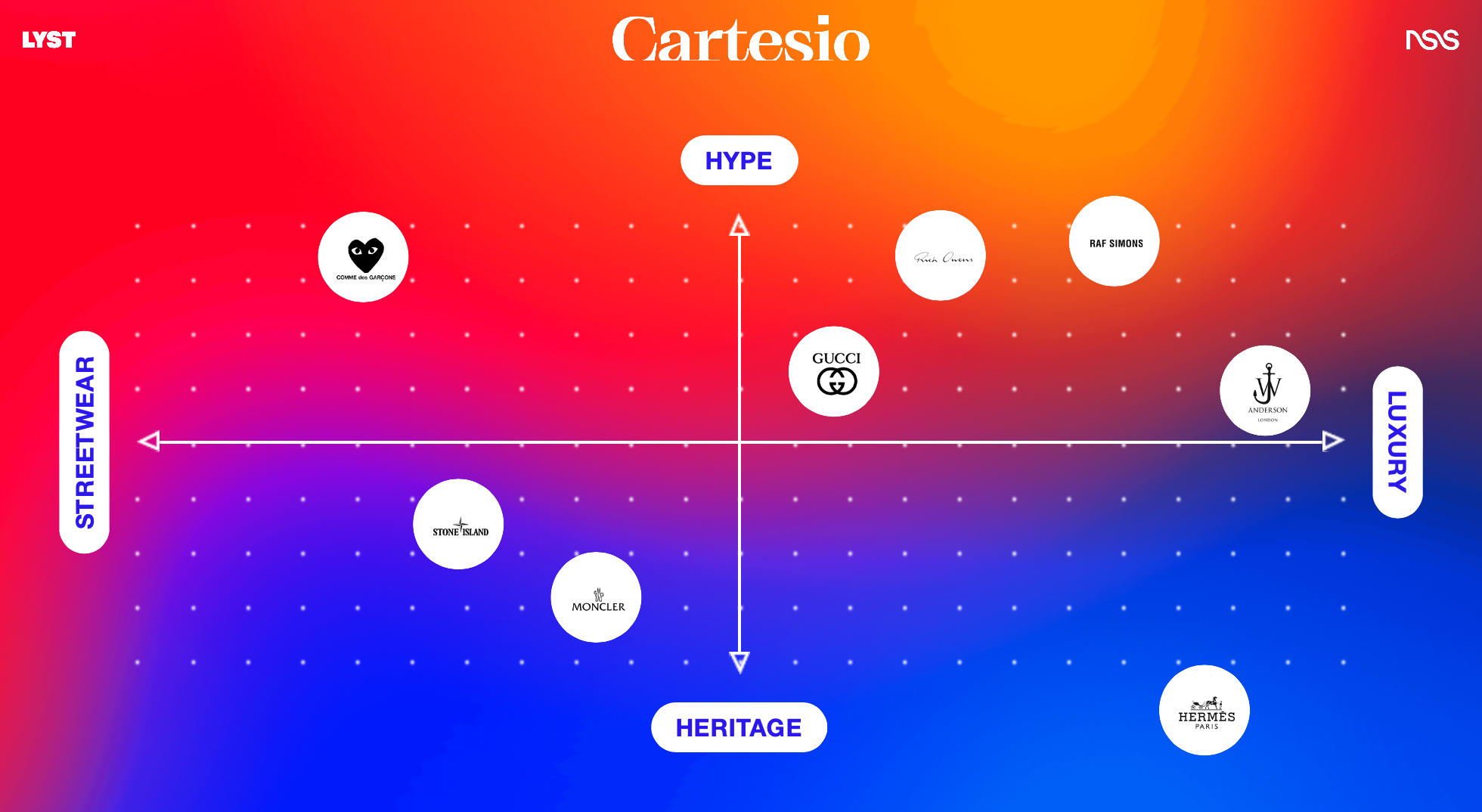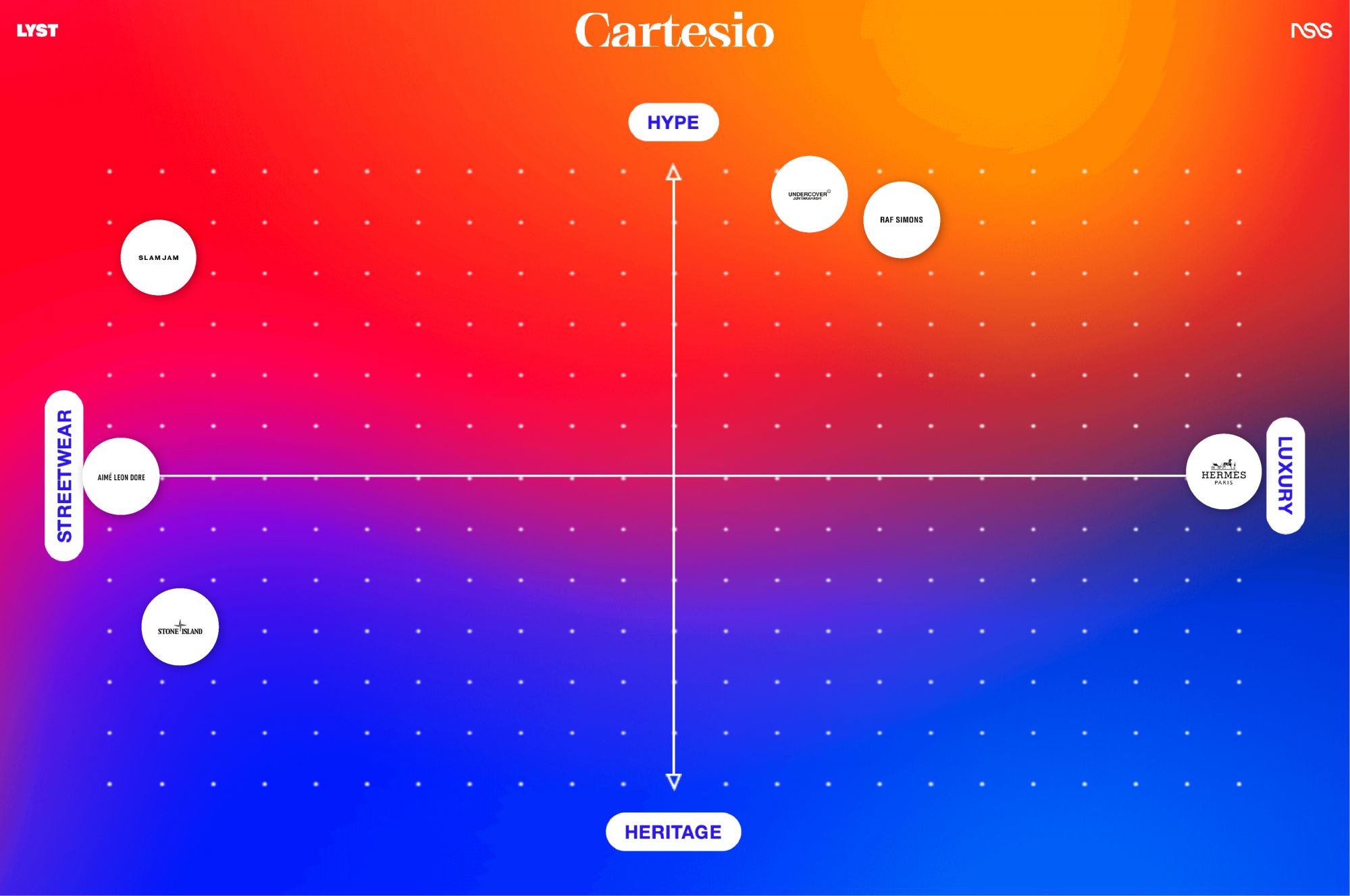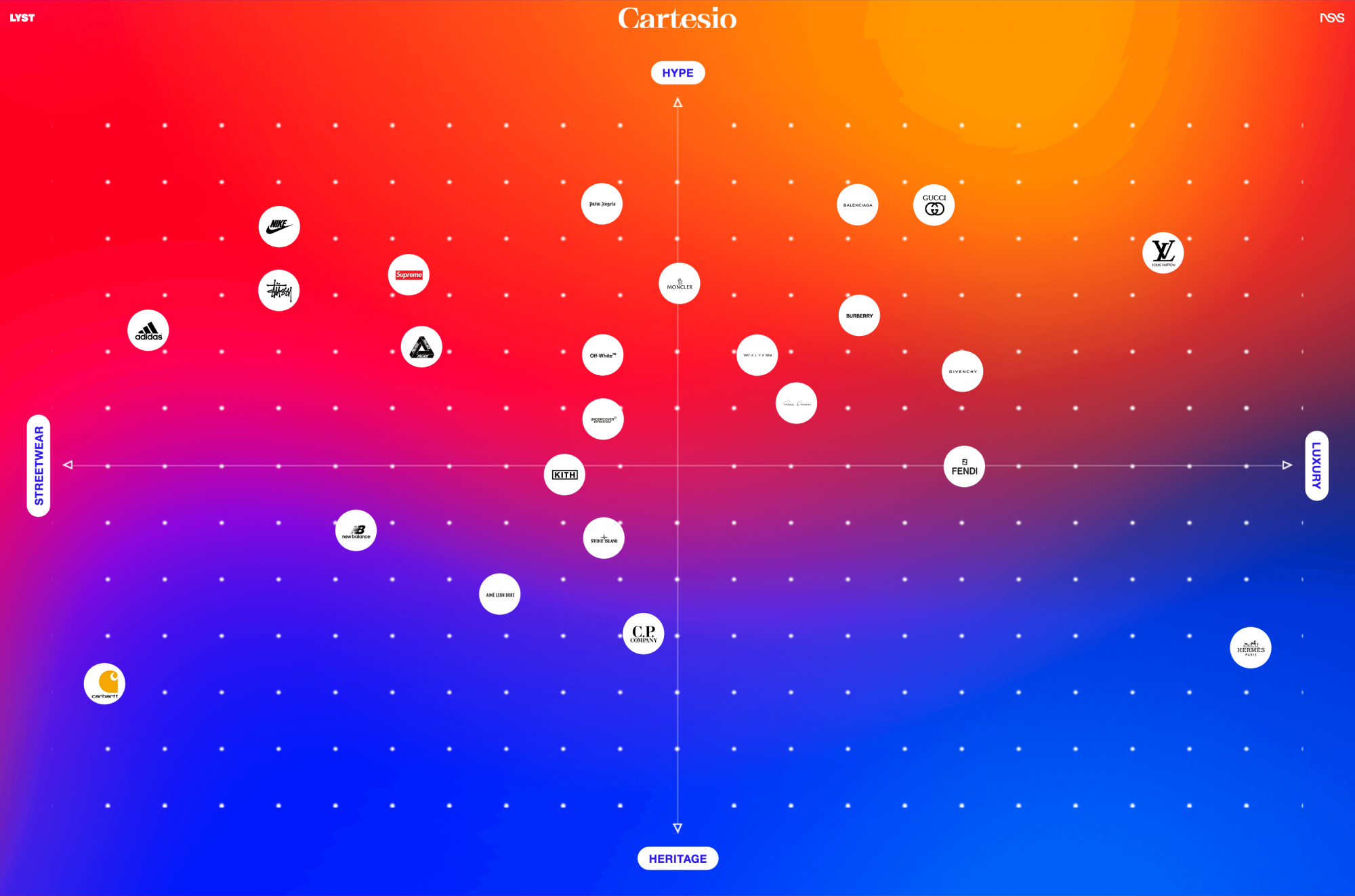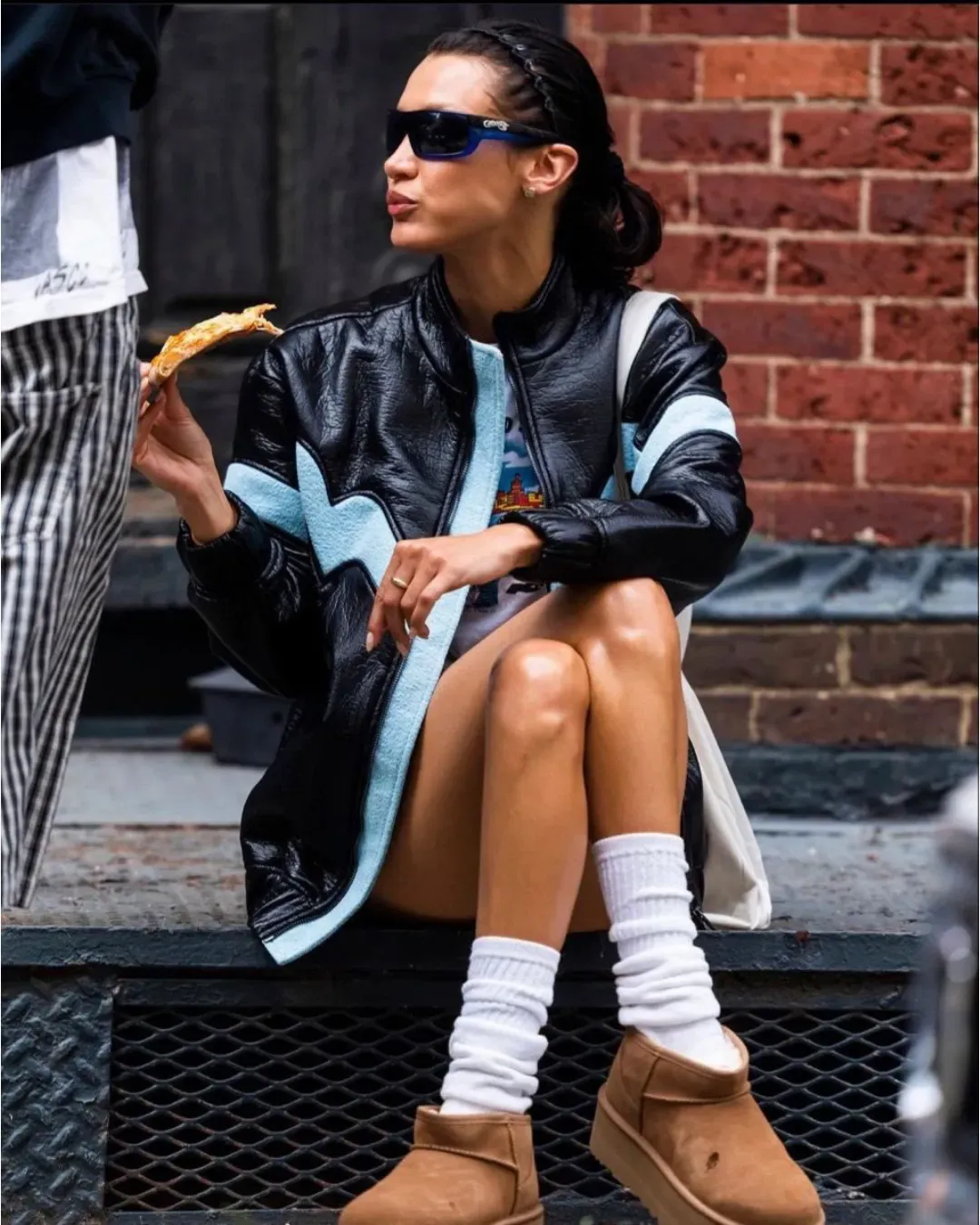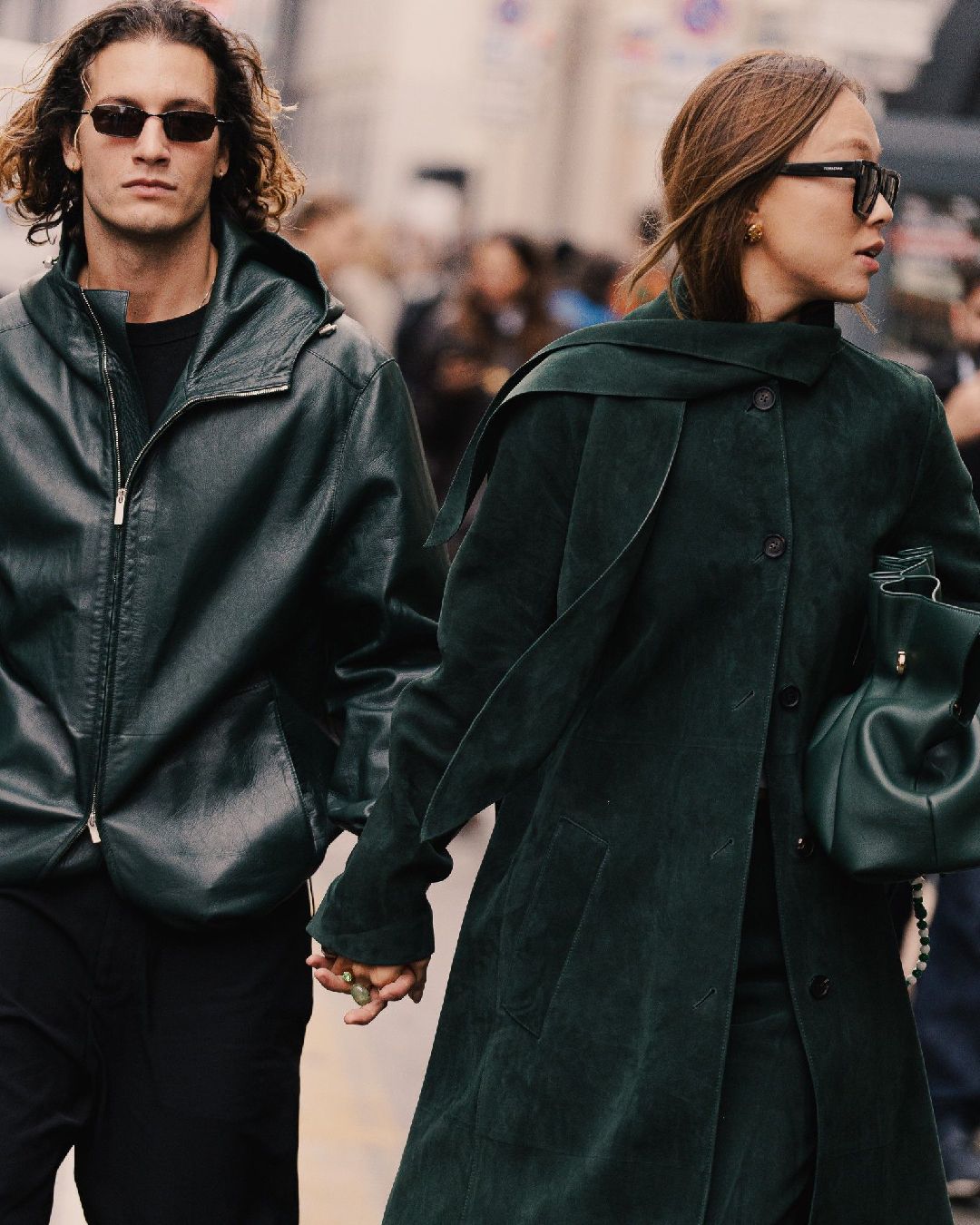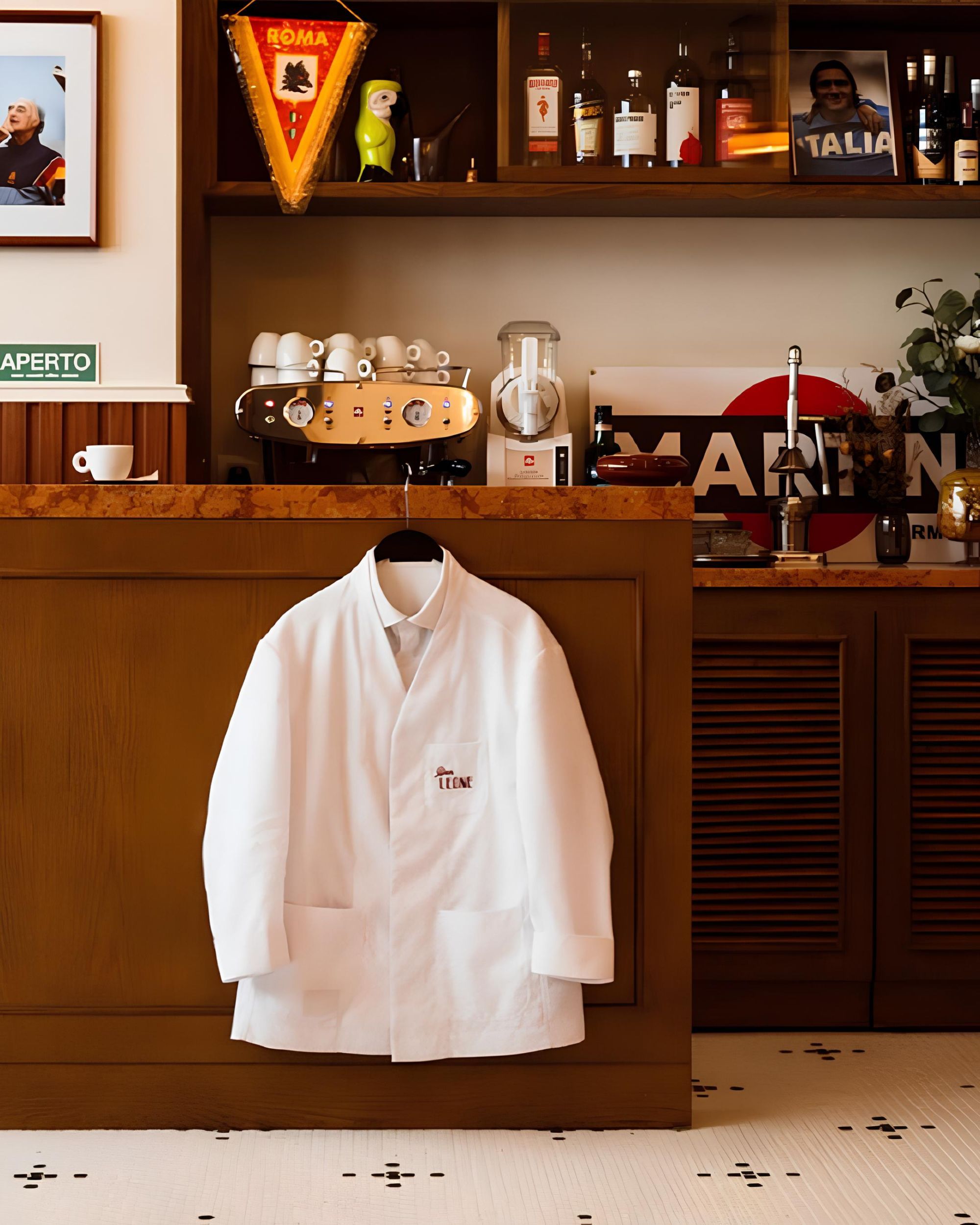
How are fashion brands perceived in Italy? The world of luxury seen from the peninsula
Italy is perhaps, together with France and the United Kingdom, one of the focal points of the world luxury industry. Most of the major luxury fashion brands were born in Italy and an even greater part of the production centers of international luxury decide to open their factories here. Not to mention the lively undergrowth of fashion professionals and independent brands that keep the Italian fashion ecosystem alive. Even when a new trend is not born in Italy, it ends up landing on its catwalks and will have to confront its designers - a phenomenon that gives the measure of the cultural status that Italy enjoys in the fashion world.
To better analyze the dominant trends today in Italy, the editorial staff asked five made in Italy fashion insiders to use the Cartesio platform, created by nss factory in collaboration with Lyst, to categorize the main luxury brands.
Federigo Barengo (@barengo)
Consultant e co-founder di NXTGN SRL
«Looking at the layout of the brands on the diagram, the line between streetwear and luxury is increasingly labile, while the gap is still marked (hoping that it will not be filled) between hype and heritage. When you think about the origins of streetwear, think about workwear and skate brands, but now the reality is very different, with a change now started ten years ago. It is hype-culture ( which goes hand in hand with the so-called sneaker culture) that dictates the law, and it is no coincidence that the most hyped brands are those that rely more and more on collabs with very high prices, such as Gucci x The North Face, and releases of sneakers in limited editions such as LV trainers in its various colorways».
Valerio Coretti (@valerio.coretti)
Consultant e co-founder di NXTGN SRL
«It is now clear that the most radical transformation is that involving luxury brands, which have incorporated and monopolized hype culture, borrowing codes and replicating models directly from the streetwear universe (drop, artificial scarcity, collab, aftermarket, etc.), during a five-year period of stylistic and cultural contamination. The birth of this phenomenon of luxury hype makes evident a concrete change in the very concept of exclusivity linked to luxury, creating a paradigm opposite to that of luxury in its classic sense.
The limited availability of a Birkin by Hermès or the iconic Little Black Jacket Chanel and so their price directly depends on the reduced production capacity and the high cost of the few highly specialized craftsmen able to work, according to high quality standards imposed by the maisons and jealously preserved, so as not to alter their perception. On the contrary, the luxury of a printed jersey sweatshirt, the result of a collaboration, takes place entirely in a cultural dimension, where the ability to realize gives way to the construction of a perceived that sees unrepeatableness and context as pillars for the construction of the perceived».
Francesca Cefis Casoli (@francescacefis)
Stylist, brand consultant and contributing fashion editor
«I believe that nowadays the concept of streatwear and luxury has come very close; but the perception that we have of the same makes us position them more distinctly on this Cartesian plane».
Alfredo Canducci Pais Ferreira
CEO & Founder of System Preferences
«There has been a change in the traditional marketing and distribution model, accelerated by the pandemic with a consequent growth of digital distribution: online sales are the number one channel, which feeds the transformation of the omnichannel. Communication takes place through marketplaces, referrals, wholesale and social media. Big brands implement new strategies to expand their positioning: to acquire new customers it is essential to integrate into new communities by adapting languages according to the channel you use. Brands approach Gen Z generations in digital streetwear and hype channels and convey their Heritage and luxury imagery through institutional campaigns. We are going through a moment of transition where brands have extended their role: from product to content broadcaster».
Manuel Marelli (@marellimanuel)
Head Creative & Buyer at Macondo Store
«As the boundary between the four cardinal points of the diagram is increasingly labile, is it still necessary to know the positioning of a brand or is it primary to know the target audience?»










































